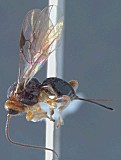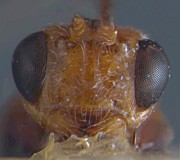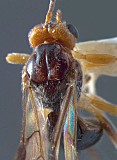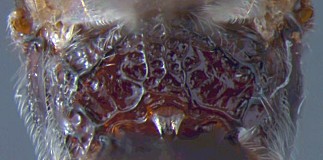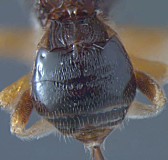Utetes bianchii (Fullaway, 1951)
Remarks
For additional information, see the Utetes page.
Other than the collections made in association with the Oriental fruit fly program in Hawaii (Clausen et al. 1965), almost nothing has been published on this species (Wharton and Gilstrap 1983, Carmichael et al. 2005).
Other than the collections made in association with the Oriental fruit fly program in Hawaii (Clausen et al. 1965), almost nothing has been published on this species (Wharton and Gilstrap 1983, Carmichael et al. 2005).
Taxonomic History / Nomenclature
This species was originally described as Opius bianchii by Fullaway (1951).
It was formally transferred from Opius to Utetes by Wharton (1997). Utetes had been recognized as a subgenus of Opius by Fischer (1972), and later elevated to generic rank by Wharton (1988). However, most of the species that attack Tephritidae were not formally transferred to Utetes until 1997, after Utetes had been redefined (Wharton 1997).
It was formally transferred from Opius to Utetes by Wharton (1997). Utetes had been recognized as a subgenus of Opius by Fischer (1972), and later elevated to generic rank by Wharton (1988). However, most of the species that attack Tephritidae were not formally transferred to Utetes until 1997, after Utetes had been redefined (Wharton 1997).
Description
This is a typical member of the genus Utetes as characterized by the carina at the base of the hind tibia (partially visible in Fig. 5). Body dark; head orange; mesonotal midpit very large; notauli deep anteriorly; propodeum rugose (Fig. 4); striate sculpture present on the second metasomal tergum (Fig. 5).
Diagnosis and Relationships
The striate second metasomal tergum separates this species from all of the other Utetes that have been reared from Tephritidae with the exception of Utetes manii (Fullaway). See keys and redescriptions in Wharton and Gilstrap (1983) and Fischer (1987).
Distribution
Introduced to Hawaii during the Oriental fruit fly program, but apparently never released.
Distribution
Native
India (Fischer, M. 1988.; Papp, J. 1985.; Fischer, M. 2000.)
Uttar Pradesh (Fullaway, D. T. 1951.; Narayanan, E. S. and Chawla, S. S. 1962.)
Biology / Hosts
Carpomya vesuviana A. Costa (Clausen et al. 1965).

